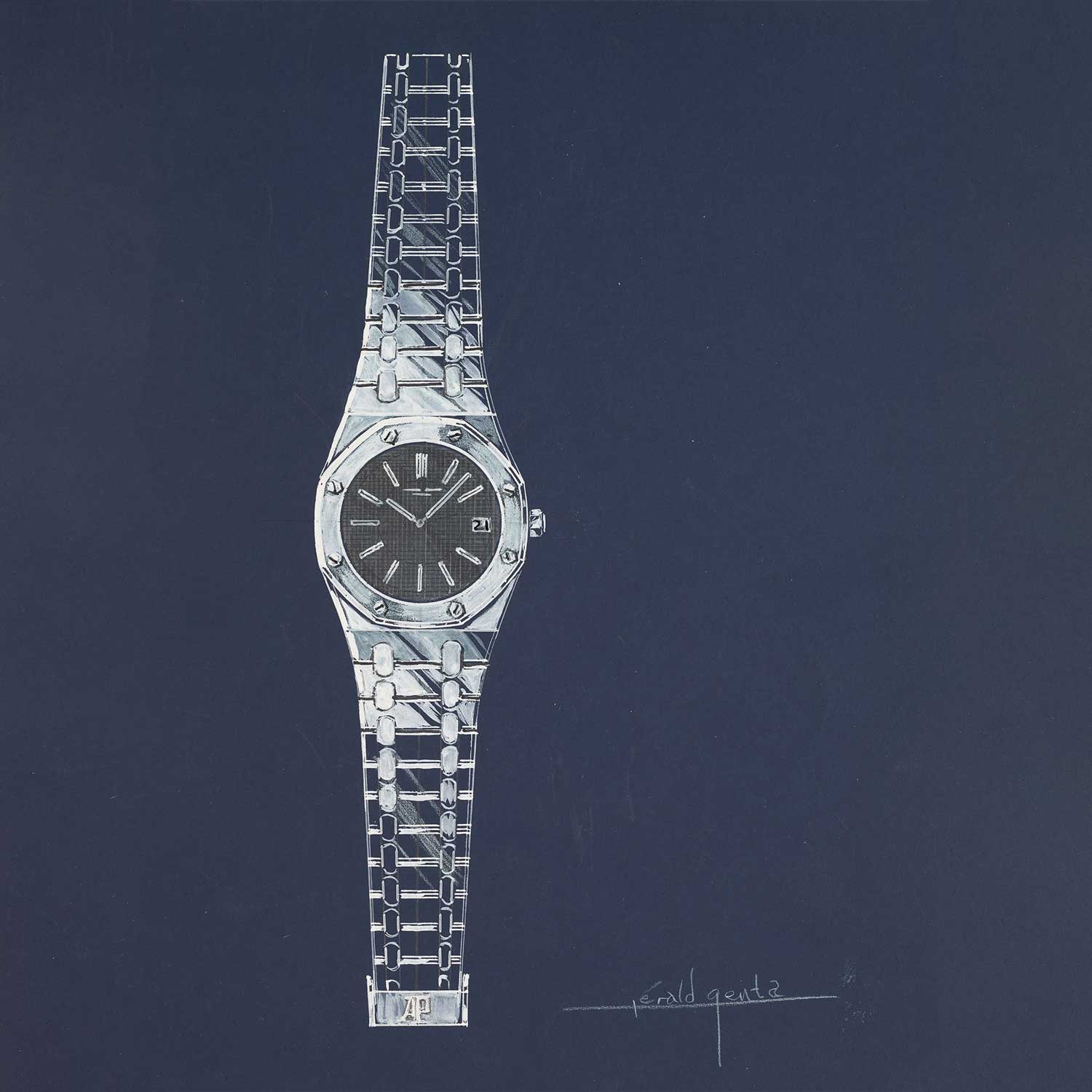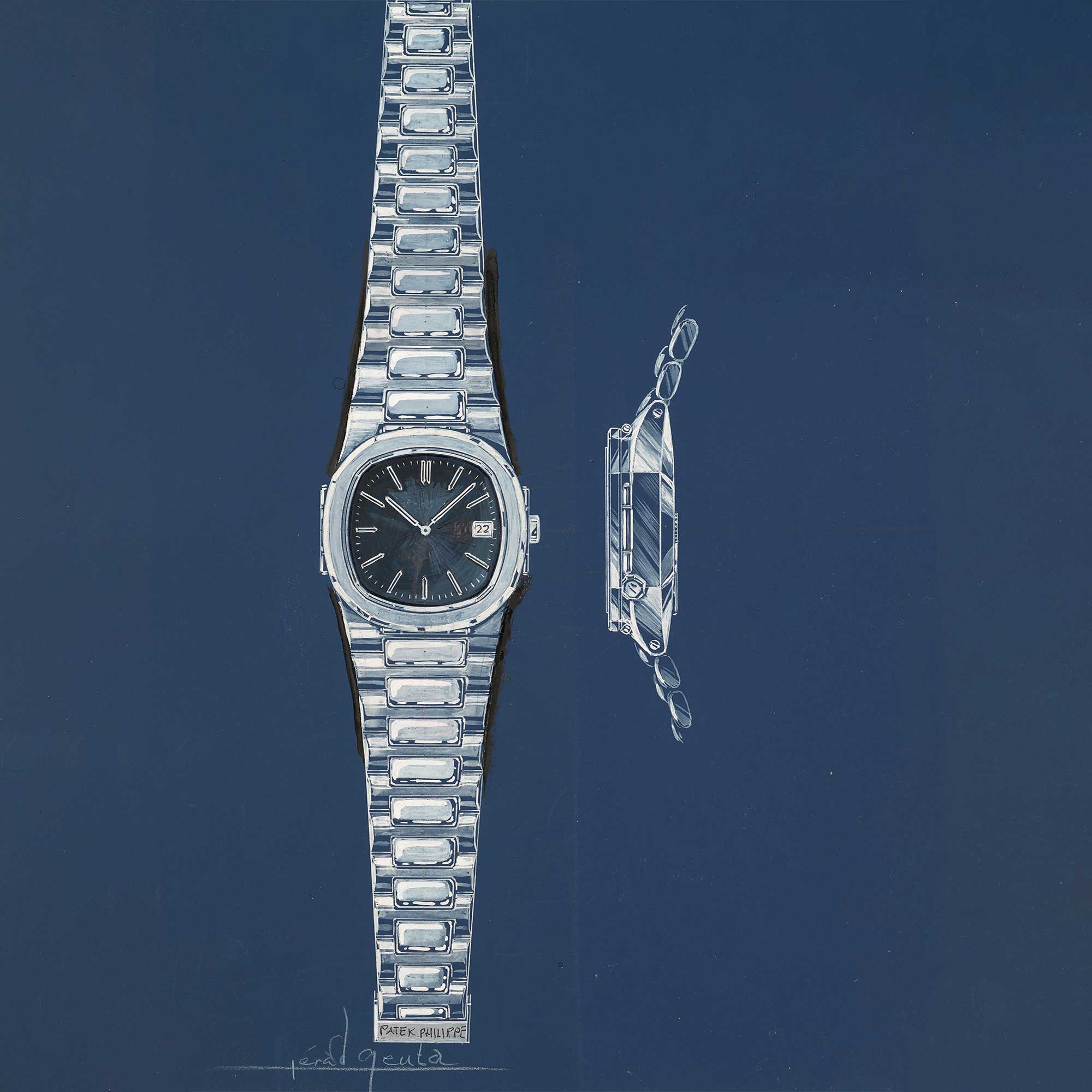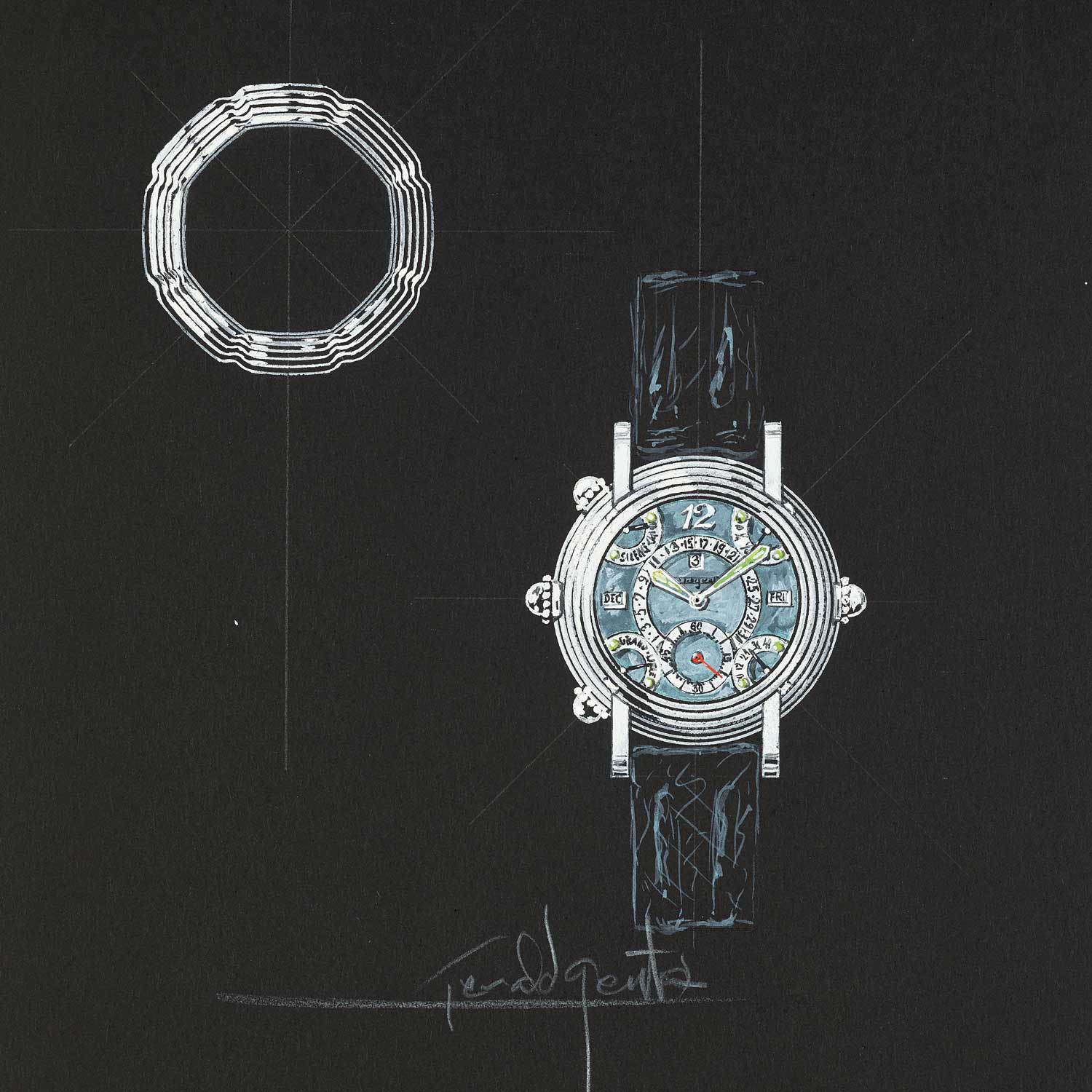Gerald Charles
Examining the Maestro: A Top-Tier Example of Geometrical Shape Play with Gerald Charles
If you’re interested in the design of watches, you’ll understand the power of the watch community. They love to share knowledge and stories about all things watches, both online and offline, which is why discovering one lovely piece leads quickly to another with their help. One of the best illustrations of this is the Audemars Piguet Royal Oak, arguably the most iconic luxury integrated-bracelet sports watch. Both beginners and seasoned collectors know a thing or two about the Royal Oak, and will eventually discover that the genius behind this incredible design is Gérald Charles Genta. You’ll also discover an entire world of creative designs penned by Mr. Genta, such as the Patek Philippe Nautilus, the Bulgari Bulgari, the Cartier Pasha, the IWC Ingénieur, the Omega Constellation, and many more. It’s no surprise because Mr. Genta revealed in an interview that he had designed over 100,000 watches throughout his career, which started in the early 1950s and lasted over half a century until he passed away in 2011.

Genta’s original 1970 sketch for Audemars Piguet’s Royal Oak

Genta’s original design for the Nautilus, one of Genta’s only designs to also show the side profile of the watch

The Grand Sonnerie, which emulates the chimes of London’s Big Ben, is a first in many ways including more than 1,000 spare parts. It features a minute repeater, Westminster fourhammer chime, perpetual calendar and dual power reserve display
A Special Legacy
Despite its understated profile, the Gerald Charles brand is significant because it embodies Mr. Genta’s style in his later years, characterized by even more idiosyncratic designs, making the revival of the brand by Federico Ziviani a positive development in the watch world. Although this may not affect the quality of the watches, the fact that the brand is still in the hands of the founding family does make the Gerald Charles watches feel a bit more special.
First, the Maestro. Designed by Mr. Genta in 2006, the Maestro case offers so much to appreciate and admire, demonstrating his design proficiency. From a distance, the case appears different from a typical watch case in that it has a rectangular shape, rather than a round one. This will do enough to set it apart and catch the eye from across the room. But as you get closer to the watch, you’ll notice that it’s not a rectangle, but an octagon — albeit a subtle one with beautifully curved and rounded edges. Look closer still and you’ll discover that it’s an asymmetrical octagon! The bottom part of the case boasts extra flairs that distinguish it from the top, with the extra curves resembling a smiley face. Yet, all of these geometric variations are harmoniously presented, making the Maestro a top-tier example of geometrical shape play. This is where Genta’s design really shines: he doesn’t conform to the norm but always tries to be different, and his stylistic breakthroughs are emotionally inspiring and moving rather than abrupt.
In fact, one of the greatest pleasures of owning a Maestro is admiring its intricate double-stepped bezel from various angles. This is a rare experience in modern watches, particularly at this price point. Most watch designs tend to prioritize simplicity for practical reasons, making the Maestro’s complex shape all the more remarkable. Despite this, it remains a design that exudes refinement and sophistication.
Maestro 9.0 Tourbillon
Now, the brand has unveiled its flagship model, the Maestro 9.0 Tourbillon, paying homage to the original Maestro Tourbillon produced in the mid-2000s. While the brand has created more complicated models in the past, like the chronograph and tourbillon with a skeletonized dial, it’s worth noting that the Maestro 9.0 Tourbillon is the most complicated watch the brand has produced since its revival, demonstrating the brand’s commitment to quality watchmaking. Another noteworthy feature is the addition of the tourbillon regulator that is a perfect fit within the design. The large opening at six o’clock reveals a constantly rotating and intricate flying tourbillon that fits perfectly into the bottom of the case, which has a downward curve reminiscent of a smiling face.
This caliber is a flying tourbillon movement, which means there are no bridges on top of the cage to obstruct the view. Another important quality of the GCA 3024/12 is the careful design of the motion works, which ensures that no wheels obstruct the view of the flying tourbillon cage, a common pitfall for tourbillon watches. In addition, the GCA 3024/12 is also kitted out with automatic winding and hacking seconds, and boasts a respectable power reserve of 50 hours while beating at a relatively high frequency of 28,800 vibrations per hour, thanks to the twin barrels within that provide extra power while improving accuracy by reducing the drop in amplitude of the balance.
Even though this movement isn’t made by Gerald Charles, the Maison’s watches have historically relied on external top-grade suppliers plus his workshop for modification or addition of complication modules, so it makes sense from a historical perspective. And the fact that the GCA 3024/12 is arguably a better movement technically speaking than many in-house tourbillon movements, further justifies the choice. On top of that, Gerald Charles has customized the movement with several upgrades that distinguish it as a proprietary creation of the brand. The tourbillon cage, for instance, has been redesigned in the shape of the “GC” logo, with the top of the letter “G” featuring a blue tip that serves as a pointer for seconds as the cage completes a revolution every minute. Notably, the cage is made of titanium and has been skeletonized to be lightweight, thereby reducing load on the movement.

Maestro GC Sport
The new Maestro GC Sport houses another outstanding movement from Vaucher, the cal. 3002, which can be found in smaller Audemars Piguet watches, such as the Royal Oak 34mm. This thin movement measures just 3.7mm in height, yet it boasts twin barrels that provide a power reserve of 50 hours. An important highlight of the movement is its free-sprung balance with gold inertia blocks, a feature commonly found in higher-end watches. This allows for the adjustment of the beat rate of the balance by altering the location of the gold weights, rather than adjusting the length of the spring.
Brands like Gerald Charles coming into the limelight once again brings greater diversity and creativity to the table. As Mr. Genta once said in an interview, “We may have the most beautiful idea in the world, but without the means to make it known, it will remain buried at the bottom of a drawer.” Gerald Charles’s rich archive of designs presents an exciting opportunity to create even more spectacular timepieces that capture the historic appeal of the brand. With its potential for greatness, it’s clear that Gerald Charles has the opportunity to continue making a positive impact in the watch industry.
Tech Specs
Maestro 9.0 Tourbillon Ref. GC9.0-A-01
Movement: GCA 3024/12, automatic flying tourbillon, 50-hour power reserve, 28,800vph, 4.87mm thickness
Cage: 60-seconds Titanium flying tourbillon cage. Blue indicator applied as small seconds
Bridge: 18-karat yellow gold bridge
Mass: 22-karat rose gold oscillating mass with honeycomb motif
Case: Medical-grade stainless steel
Screw-down crown: Medical-grade stainless steel with Clous de Paris finish
Dial: Sunburst royal blue; flying tourbillon with 60-seconds indication at 6 o’clock, hands and indexes filled with Super-LumiNova®
Case back: Medical-grade stainless steel with sapphire crystal aperture
Strap: Royal blue vulcanised rubber
Maestro GC Sport Clay and Maestro GC Sport Clay Grass
References: GC2.0-TX-TN-08 (Clay) and GC2.0-TX-TN-02 (Grass)
Movement: Ultra-thin automatic Ref. GCA 3002, developed with Vaucher Manufacture Fleurier, 3.7mm thickness, 28,800vph, 50-hour power reserve, hours, minutes and central seconds, date at 6 o’clock, circular-grained and Côtes de Genève decoration
Case: Grade 5 titanium with polished finish, 39mm x 41.7mm x 8.7mm, screw down crown
Dial: Russet or green, hand-applied textured finish, numerals, hour and minute hands and indexes filled with Super-LumiNova®
Case back: Brushed Grade 5 titanium with sapphire crystal opening
Strap: Chocolate brown or green vulcanised rubber, Clous de Paris finish to top side, Gerald Charles logo tapisserie to rear, Grade 5 titanium buckle
Limited edition: 200pcs each










